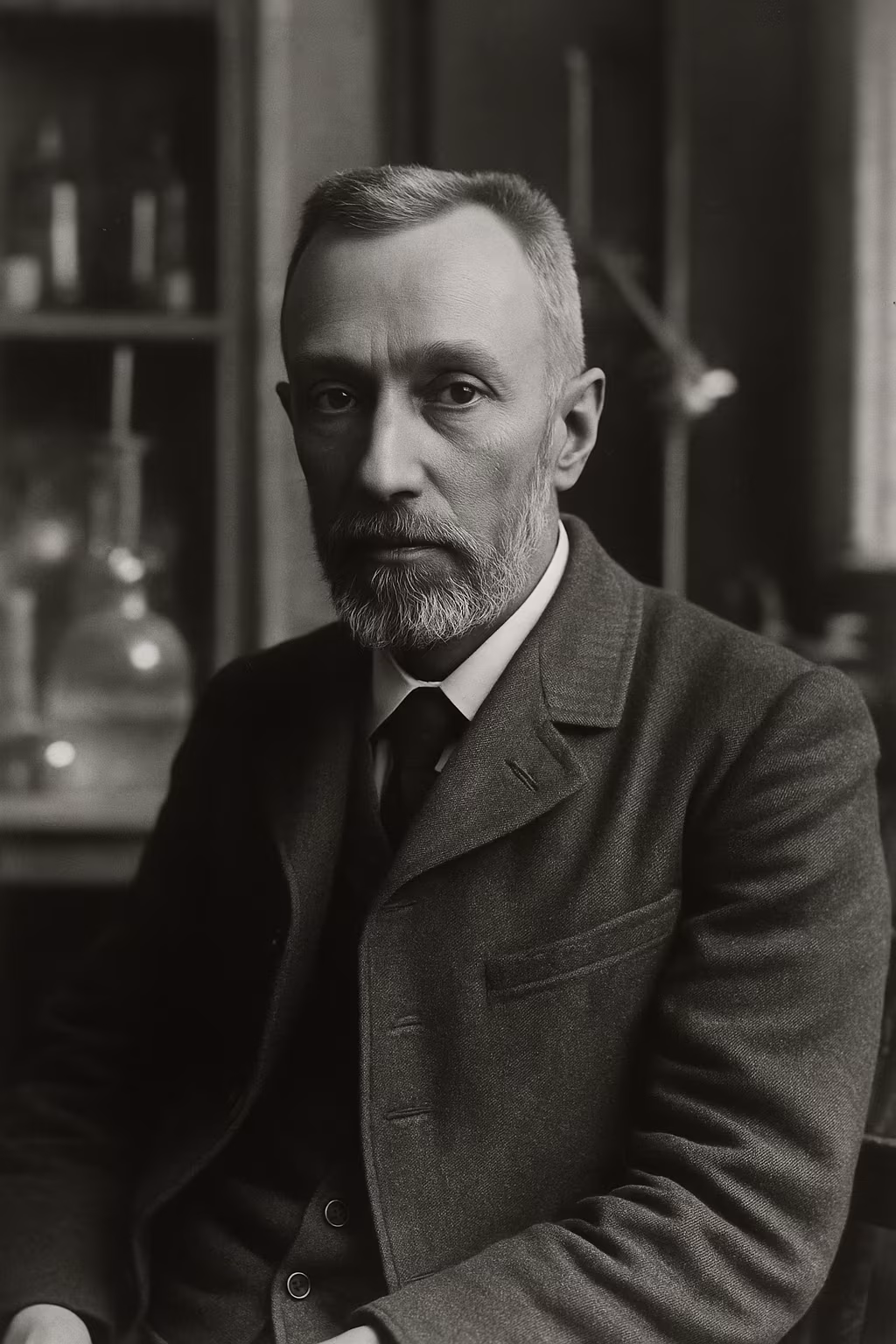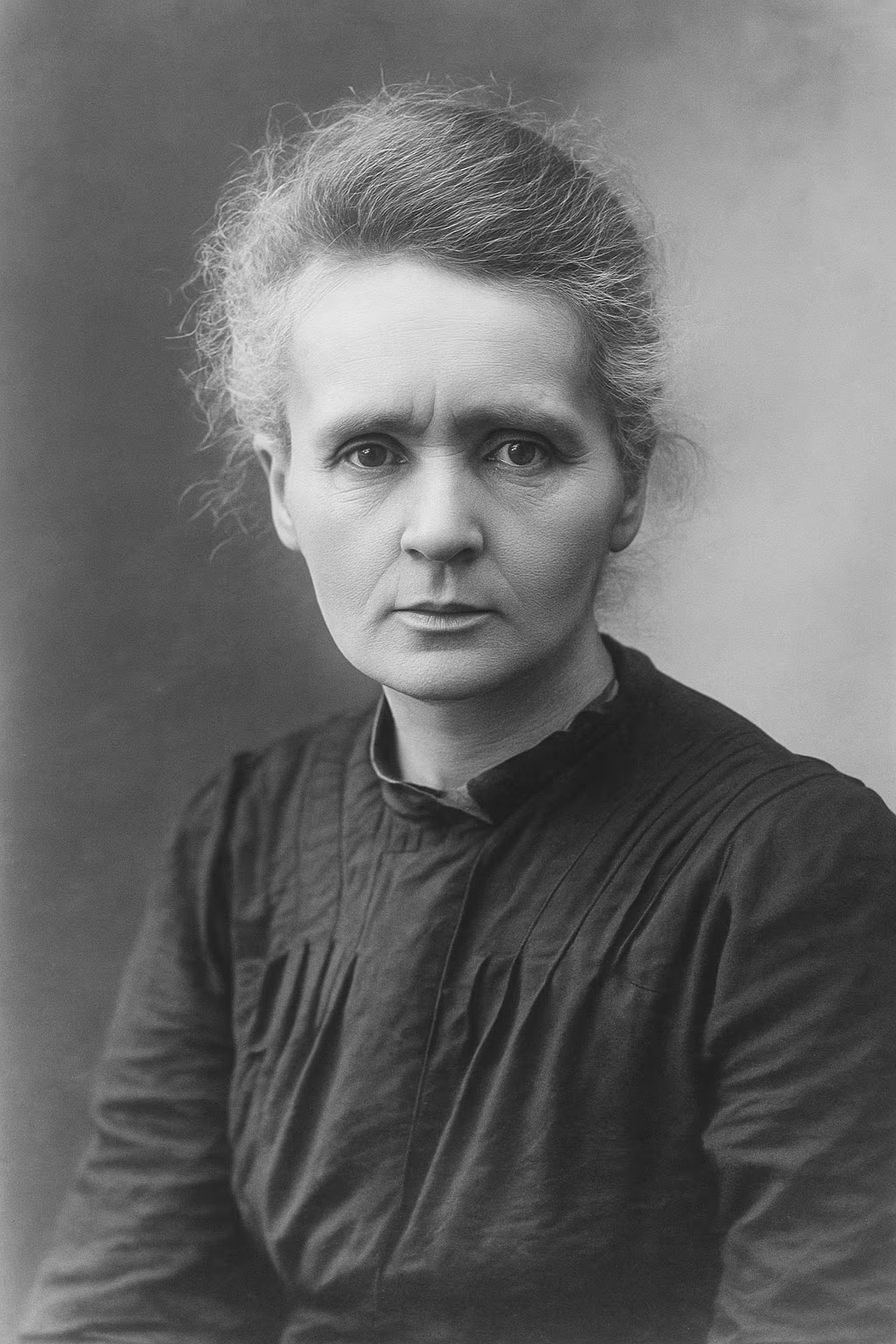Pierre Curie (1859 – 1906)
Quick Summary
Pierre Curie (1859 – 1906) was a physicist and major figure in history. Born in Paris, France, Pierre Curie left a lasting impact through Co-discovery of piezoelectricity with his brother Jacques (1880).

Birth
May 15, 1859 Paris, France
Death
April 19, 1906 Paris, France
Nationality
French
Occupations
Complete Biography
Early Life
Pierre Curie was born in Paris on May 15, 1859, into a family of modest means but strong intellectual curiosity. His father, Eugène Curie, was a physician who encouraged his son’s fascination with natural sciences. Pierre demonstrated an exceptional aptitude for mathematics and experimentation from a young age. After earning his degree at the Sorbonne, he began working as a laboratory assistant, where his precision and creativity quickly set him apart. He co-discovered, with his brother Jacques, the phenomenon of piezoelectricity in 1880 — the generation of electrical charge in certain crystals under mechanical stress — a breakthrough that would have lasting applications in electronics and measurement devices.
Academic Career
Pierre Curie’s scientific rigor and inventive spirit led to rapid recognition. He became head of the physics laboratory at the School of Industrial Physics and Chemistry in Paris (ESPCI). There, he developed his famous torsion balance and conducted pioneering studies on magnetism. His experiments on the magnetic properties of materials resulted in the formulation of 'Curie’s law', establishing a quantitative relationship between magnetization and temperature. His work bridged theoretical and experimental physics, combining meticulous measurement with an intuitive grasp of natural laws.
Meeting Marie Sklodowska
In 1894, Pierre met Maria Skłodowska, a brilliant Polish student studying at the Sorbonne. Their shared dedication to science soon evolved into a deep personal and intellectual bond. Married in 1895, the couple formed one of the most iconic partnerships in scientific history. Pierre’s laboratory became the center of their collaborative research, blending his mastery of instrumentation with Marie’s exceptional analytical skills. Their union produced not only two daughters but also groundbreaking discoveries that would redefine physics.
Research On Radioactivity
Inspired by Henri Becquerel’s discovery of uranium radiation, Pierre and Marie Curie began investigating substances emitting invisible rays. Through painstaking experimentation, they identified two new elements — polonium and radium — and coined the term 'radioactivity' to describe the phenomenon. Pierre designed sensitive instruments capable of measuring extremely weak radiation, enabling their precise studies. The couple’s work culminated in 1903 with the Nobel Prize in Physics, shared with Becquerel, honoring their contributions to the understanding of radioactive phenomena.
Scientific Philosophy
Pierre Curie was known for his simplicity, humility, and ethical sense of science. He viewed research not as a path to wealth or fame but as a pursuit of truth and service to humanity. Deeply pacifist and socially conscious, he believed in the moral responsibility of scientists. His reflections on the potential dangers of uncontrolled scientific progress — particularly regarding radioactivity — were remarkably prescient.
Death And Legacy
On April 19, 1906, Pierre Curie was tragically killed in a street accident in Paris when struck by a horse-drawn carriage. His sudden death profoundly marked Marie Curie and the entire scientific community. Posthumously, his name became synonymous with integrity, curiosity, and devotion to knowledge. His discoveries in magnetism, crystallography, and radioactivity remain foundational in physics, and his moral example continues to inspire scientists worldwide.
Achievements and Legacy
Major Achievements
- Co-discovery of piezoelectricity with his brother Jacques (1880)
- Formulation of Curie’s law on magnetism
- Development of the torsion balance and precision instruments
- Co-discovery of polonium and radium with Marie Curie (1898)
- Nobel Prize in Physics (1903) with Marie Curie and Henri Becquerel
Historical Legacy
Pierre Curie’s contributions transformed physics and set ethical standards for modern research. His precise experiments on magnetism and his role in discovering radioactivity shaped the future of atomic science. Remembered as a model of intellectual honesty and devotion to discovery, he remains one of the founding figures of 20th-century physics.
Detailed Timeline
Major Events
Birth
Born in Paris, France
Piezoelectricity
Discovered the piezoelectric effect with Jacques Curie
Met Marie Skłodowska
Beginning of their scientific collaboration
Discovery
Co-discovered polonium and radium
Nobel Prize
Received Nobel Prize in Physics
Death
Died in Paris in a street accident
Geographic Timeline
Famous Quotes
"It would be a fine thing to see also the application of scientific discoveries to peace."
"Science is of no country, because knowledge belongs to humanity."
External Links
Frequently Asked Questions
When was Pierre Curie born and when did he die?
Born May 15, 1859, in Paris; died April 19, 1906, in Paris.
What did he discover?
He co-discovered piezoelectricity, formulated Curie’s law, and co-discovered polonium and radium.
Who was his scientific partner?
His wife, Marie Curie.
When did he receive the Nobel Prize?
In 1903, shared with Marie Curie and Henri Becquerel.
What were his main research topics?
Magnetism, crystallography, and radioactivity.
Sources and Bibliography
Primary Sources
- Archives du Musée Curie
Secondary Sources
- Susan Quinn, Marie Curie: A Life ISBN: 9780679727910
- Eve Curie, Madame Curie ISBN: 9782070379473
External References
See Also
Related Figures
Specialized Sites
Batailles de France
Discover battles related to this figure
Dynasties Legacy
Coming soonExplore royal and noble lineages
Timeline France
Coming soonVisualize events on the chronological timeline
